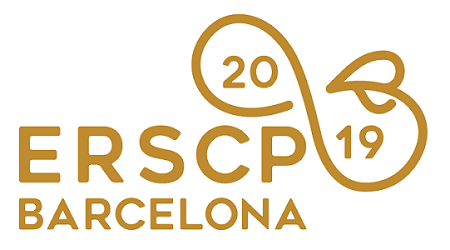Papers Proceedings »
Grain size dependent distribution of plastic types in coarse-shredded commercial and municipal waste
The plastic content in mixed municipal and commercial waste in Austria is between 10 and 20 wt.% and is subject to strong regional and seasonal fluctuations. Only a small fraction of post-consumer plastic is removed and recycled. The biggest part is used for energy recovery and is lost to the recyclable material cycle. It is suspected that the potential of recoverable plastics in these waste streams is high. The EU's new recycling legislation foresees that in 2030 at least 60% of all municipal waste has to be recycled. In order to increase the actual rates, it will be necessary in future to process waste streams that are currently thermally recovered more deeply, thereby gaining further recyclable fractions. Detailed waste analyses provide the basis for decision-making for future handling and recovery options. One of the questions that arises is whether potentially interesting types of plastics are present in particular particle size ranges or can be concentrated by shredding. Furthermore, it is investigated how the distribution of the dimensionality (2D resp. 3D) behaves in the individual particle size ranges and whether a sieve could be used for enrichment and separation. For the investigations, mixed commercial waste from the Graz area, Austria, and residual waste from the Allerheiligen area, Austria, was used. Both waste streams were shredded by a mobile large industrial shredder and sampling took place from the falling stream. Then the sample material was sieved with a drum screen to produce nine particle size fractions: <5 mm, 5-10 mm, 10-20 mm, 20-40 mm, 40-60 mm, 60-80 mm 80-100 mm, 100-200 mm and 200-400 mm. Subsequently, for the particle size fractions >20 mm of both wastes, the material composition was determined by manual sorting analysis. The recovered plastic fraction was additionally sorted into two-dimensional (2D) and three-dimensional (3D) objects. To obtain more detailed information of the plastic types contained in the samples, another manual, sensor-based sorting of the mixed plastic samples was carried out. Two technologies were used to identify the different types of plastic. Primarily, a near-infrared sensor (NIR) and a Fourier Transform Infrared (FTIR) spectrometer were used. All mixed plastic samples were sorted into 18 different types of plastic. The data will be fully evaluated in the coming weeks, which is why no results can be discussed and conclusions drawn at the present time. The authors are confident that interesting results can be expected, in particular for recycling-relevant plastics and that conclusions can be drawn and presented regarding the enrichment of certain plastics in individual particle size ranges. In addition, it is expected that the combination of the results of the grain-size distribution and the distribution via the particle-dimensionality results in interesting relationships. It is underlined that the results and conclusions are based not only on one but on 24 individual samples of the respective waste stream. This allows better statistical interpretation of the data and increases the reliability of the results presented, as it also reflects the heterogeneity of the waste and plastic type distribution in different grain size fractions.
